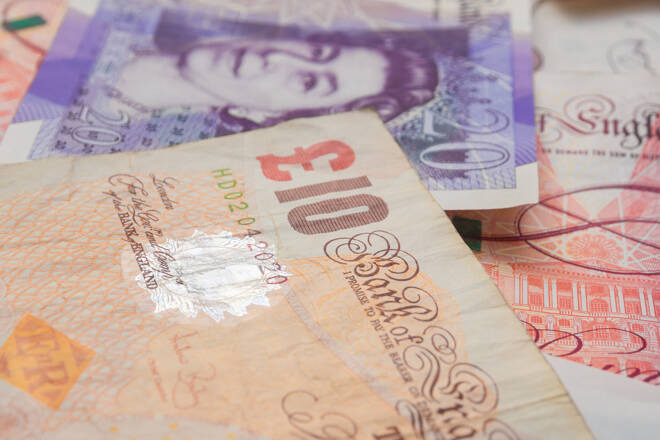Advertisement
Advertisement
GBP/USD Recovers Back to Green Despite Gloomy BoE Outlook on Weak Buck; DXY Slips 0.6%
By:
Sterling still lags most of its G10 peers after the BoE’s late-2022/2023 recession forecast, despite recovering versus the buck.
Key Points
- The US dollar fell on Thursday in tandem with US yields as jobless claims data showed US labor market softening.
- USD weakness helped GBP/USD recover its post-BoE losses, with the pair last trading in the green above 1.2150.
- But sterling was still a laggard versus most of its G10 peers following the BoE’s gloomy economic outlook.
Buck Slides as Data Shows Softening US Labor Market Ahead of Friday’s NFP
The US dollar fell on Thursday, weighed amid downside in US yields on US data showing a softening of the US labor market last week ahead of the release of official US jobs data for July on Friday. The Dollar Index (DXY) was last trading with losses of around 0.6% on the day in the 105.70 area, having fallen back from earlier session highs in the 106.50 area.
US data on Thursday showed a rise in the number of new jobless claims last week to 260,000 from 254,000 a week earlier, slightly above expectations. Weekly initial jobless claims have been trending higher since April when they bottomed at 167,000, indicative of a softening in the US labor market. However, data out on Friday is expected to show that the US economy still added 250,000 jobs in July, albeit a slower pace of job gains versus June, when 372,000 jobs were added.
Some analysts suggested that a sharp drop in US oil prices to levels not seen since Russia’s February invasion of Ukraine might have also weighed on the buck by giving a boost to the “peak inflation” narrative that has been gaining ground as of late. Lower US oil prices could help bring down elevated inflation, allowing the US Federal Reserve to take a slower approach to monetary tightening, thus weighing on the buck.
The weakening US dollar on Thursday ignored hawkish commentary from Fed policymaker Lorreta Mester, who said the Fed would need to see several months of inflation trending lower before the central bank will take its foot of the gas in terms of tightening and hinted that the bank is open to another 75 bps rate hike in September, depending on the data.
GBP Recoups Post-BoE Losses
The Bank of England raised interest rates by 50 bps to 1.75% in an 8-1 vote on Thursday, as expected by most analysts and money market pricing and talked up the prospect of significant further tightening as it warned that the headline YoY rate of UK inflation could surpass 13% in October. However, the pound initially weakened given the BoE’s very gloomy new economic forecasts. The UK central bank thinks that the economy will slip into recession in Q4 this year and won’t return to growth until 2024.
The GBP reaction seemed to reflect skepticism amongst traders as to how much more tightening the BoE will be able to deliver given the weakening economic backdrop. But GBP/USD has since picked up from earlier session lows in the mid-1.2000s and was last back trading slightly to the upside of the 1.2150 level, up about 0.2% given a boost from US dollar weakness.
Compared to most of its G10 peers on the day, however, GBP is still a laggard. The euro, yen, kiwi and Aussie were all last trading higher by 0.5% to 0.8% versus the US dollar. The exception is the Canadian dollar, which is currently the worst performing G10 currency on Thursday amid sharp downside in global oil prices. Oil is one of Canada’s largest exports. Loonie traders await Canadian jobs data, also for July, on Friday, which will be released alongside the US figures.
About the Author
Joel Frankauthor
Joel Frank is an economics graduate from the University of Birmingham and has worked as a full-time financial market analyst since 2018. Joel specialises in the coverage of FX, equity, bond, commodity and crypto markets from both a fundamental and technical perspective.
Advertisement
